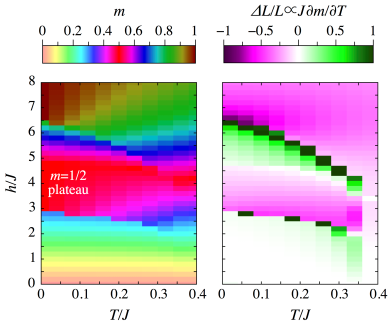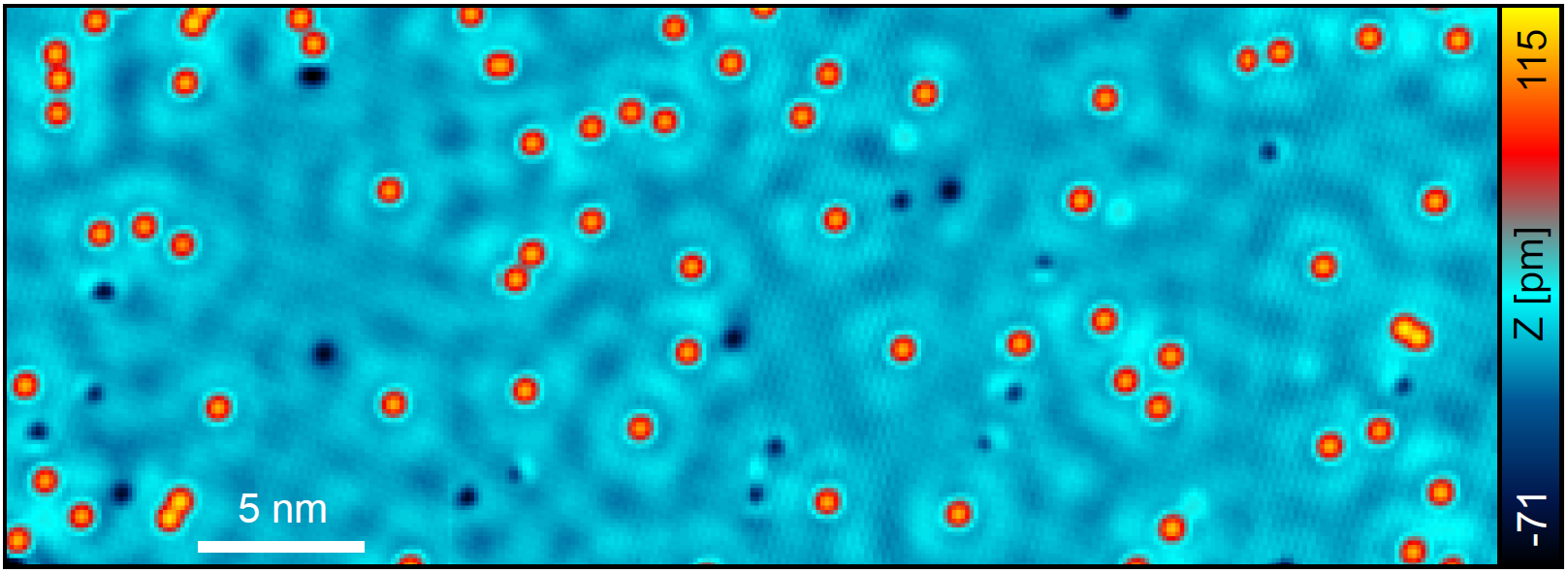2019
Negative thermal expansion in Cr spinel. — Most materials expand when heated and contract when cooled — this is the usual “thermal expansion”. The higher the temperature, the more the atoms move and the more they stretch the bonds between them, making the material expand. Only in a few exceptional cases does a material display “negative thermal expansion” (NTE), expanding as it is cooled. The water shows such a behavior close to freezing, and this made life on Earth possible.
In a paper published in Physical Review Letters , the international team including a researcher from Wigner RCP explains how the magnetic spinel material CdCr2O4 expands upon cooling. Experiments on the Chromium spinel CdCr2O4, carried out by scientists at the High Field Magnetic Laboratory in the Netherlands, reveal that this material also exhibits NTE under specific conditions, namely at low temperatures (below 4K) and high magnetic field (at 30T). This particular property of the CdCr2O4 is explained by the highly frustrated lattice the magnetic chromium ions form. Besides, there is a strong coupling between the lattice and the magnetic ions, called magnetostriction, which helps the spin to satisfy their magnetic energy at the price of deforming the material. Theoretical calculations show that the frustration and the magnetostriction are the key factors that can translate the heat stored in fluctuations of the spin into contraction of the sample, leading to negative thermal expansion.

Figure 1. The magnetization m (left panel) and its temperature derivative (right panel) as a function of magnetic field and temperature. The magnetization is calculated by Monte-Carlo calculations for an effective theoretical model with classical spins and 3456 pyrochlore lattice sites, and is given as a fraction of the saturation magnetization. The negative δm/δT leads to negative thermal expansion ΔL/L in the in the lower part of the half magnetization plateau, and above saturation (L is the linear size of the sample).
Theoretical contributions to various surface science topics. — The coordination-restricted ortho-site C-H bond activation of 1,3-BPyB and 1,4-BPyB molecules on different metal surfaces (Cu, Au) were studied by a combination of scanning tunneling microscopy (STM), non-contact atomic force microscopy (AFM), and density functional theory (DFT) calculations in collaboration with Chinese and German groups . Ultrathin Mo-oxide films on a Au(111) surface were theoretically studied in collaboration with Korean and Australian groups . The synthesis of N-doped single-layer graphene, doping properties, and doping-induced variation of the local work function of graphene have been investigated on the atomic scale by combining STM/STS, X-ray photoelectron spectroscopy (XPS), and DFT calculations in collaboration with USA, Chinese and Korean groups . The Cu2O(111) surface has been studied in collaboration with Korean groups using STM and DFT . The magnetic ground states of linear Fe chains with variable lengths on the Re(0001) superconductor surface and the emergence of chiral multispin interactions were reported in collaboration with the Budapest University of Technology and Economics . Adsorbing individual 3d transition metal atoms (Mn, Fe, Co) on the Re(0001) surface, the Kondo coupling, the magnetic anisotropy, and the Yu-Shiba-Rusinov states were investigated depending on the d-band filling of the adatoms in collaboration with German groups .

Figure 2. STM image of Mn atoms on the surface of Re(0001) [7].
Mixed phase High Entropy Alloys (HEA). — A new formula was worked out, which made possible for the first time to plan the BCC/FCC phase ratio engeneering in the double-phase region of the High Entropy Alloys (HEA). XRD, magnetization and Mössbauer spectra measurements were carried out to study the FCC to BCC phase transformations for 16 new HEA materials based on Mn-Co-Fe-Ni alloys doped with light and heavy sp elements. This phase transformation can be produced in the non-equilibrium, double-phase range of the composition marked by its Valence Electron Concentration between 7,4 and 7,82. It is our conjecture that new materials for magnetocaloric effect can be found between the metastable BCC phases.



